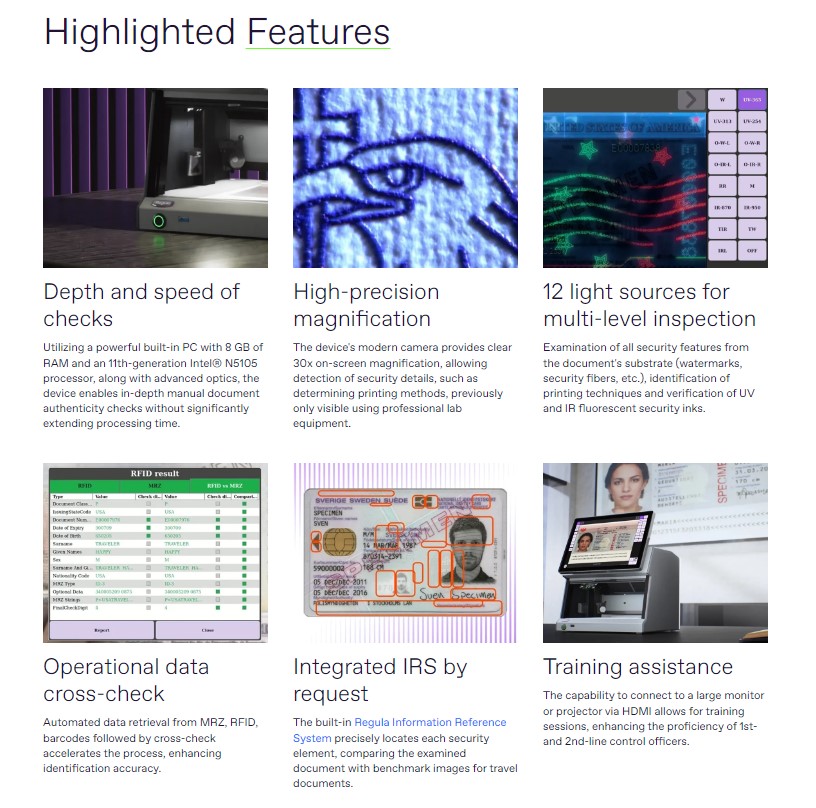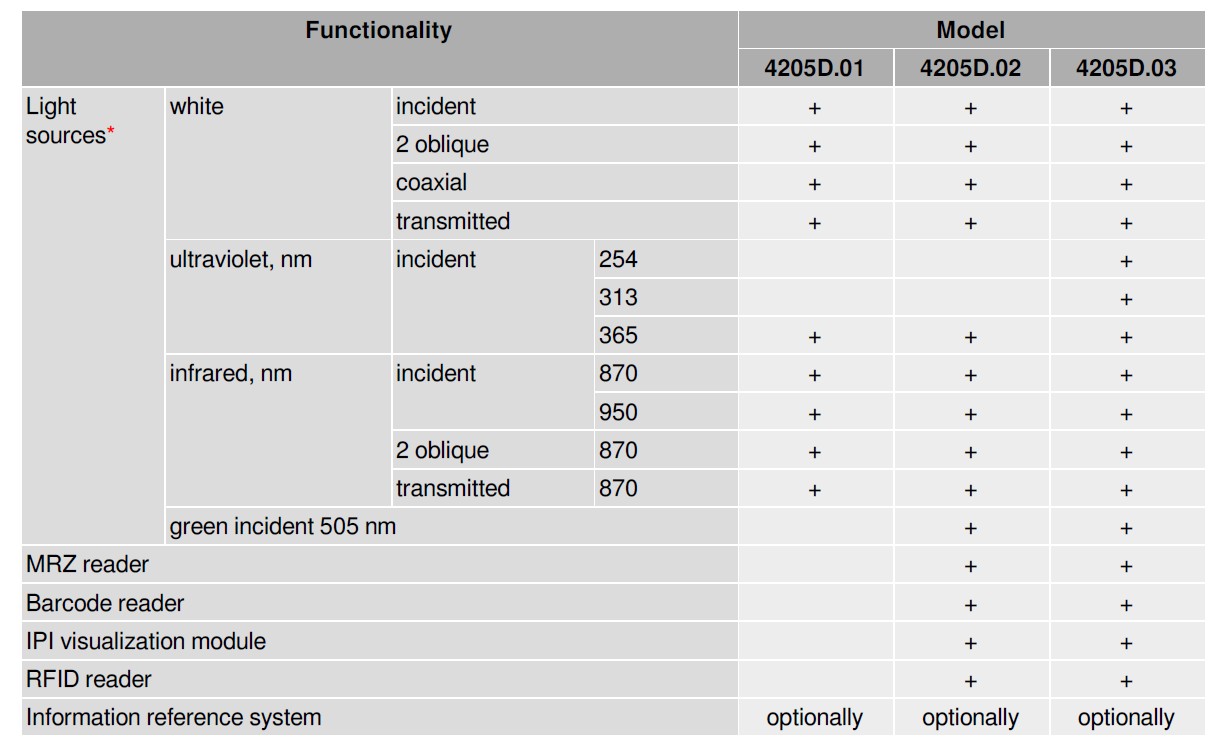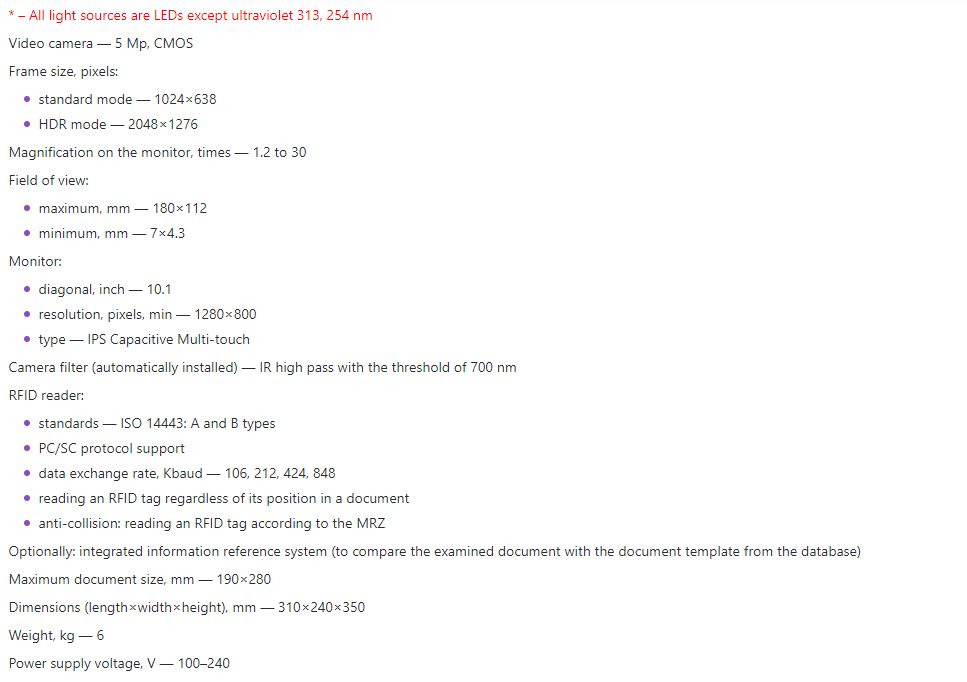The Regula 4205D is a desktop standalone forensic document examination instrument with 5Mpx colour camera up to 12 integrated light sources and integrated touch screen display and capabilities such as MRZ reader, Barcode, IPI and RFID.
Control buttons on the front panel are responsible for the activation of light sources and adjustment of camera parameters in different examination modes.
The device has a spacious working area over the object stage, clamps for fixing examined documents, and a mount for fixing the device on a table (G-lock for anti-theft). The monitor angle and its brightness can be adjusted.
Regula 4205D is equipped with modules for reading MRZ, IPI, barcodes and RFID chips. It can be optionally supplied with an integrated information reference system to compare the examined document with the corresponding document template from the database.

Functionality
-
Examinations on different levels
protection of the document basis
-
- paper opacity, watermarks, security fibres, planchets, security threads, holograms, foil stamping, pole feature, all types of windows, transparent vanish coating, shadow images, etc.
printing methods
-
- intaglio: texts, guilloche frames, rosettes and vignettes, microprinting, latent images and moire patterns, signs for the visually impaired, blind embossing, colour shifting ink, including OVI with embossing and latent images, etc.
-
- letterpress: serial numbers, texts, barcodes, etc.
-
- offset printing: including Orlov and rainbow printing: texts, microprinting, moire patterns, background and anti-copy patterns, etc.
-
- screen printing: security features with optically variable effects, etc.
-
- see-through register
-
- perforation
physicochemical protection
-
- UV luminescence
-
- IR luminescence
complex security features
-
- retroreflective protection
-
- security features with IR-metameric ink
-
- special polymer coating of security laminates
Additional examination of
-
- fragments of document images depending on the degree of absorption or reflection of IR light
-
- document alterations such as erasure, etching etc.
-
- traces of signature forgery
-
- extraneous lines (do not originally belong to the examined object) that are performed with IR opaque inks
-
- blurred, crossed out entries, texts and images
-
- document mechanical defects such as cuts, tears, folds, etc.
Specifications


Applications
-
Border control/immigration services
-
Customs authorities
-
Law-enforcement agencies
-
Forensic laboratories
-
Financial institutions
-
Other agencies and organizations authorized to check documents